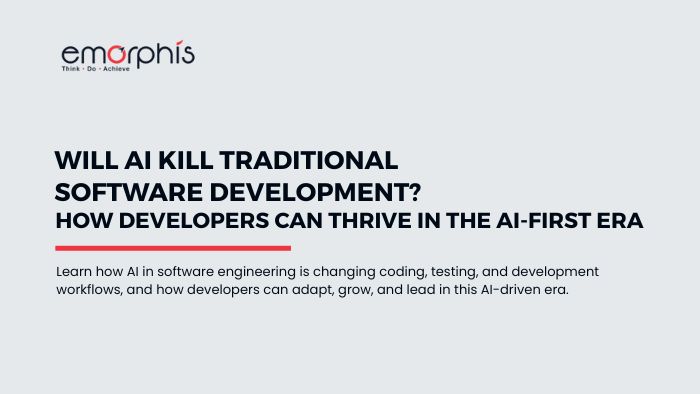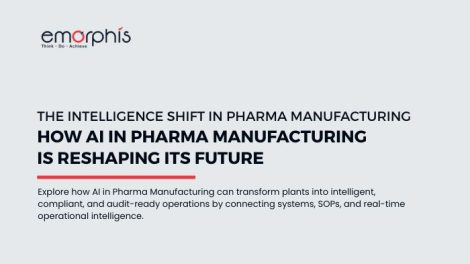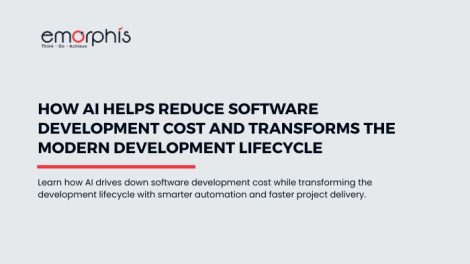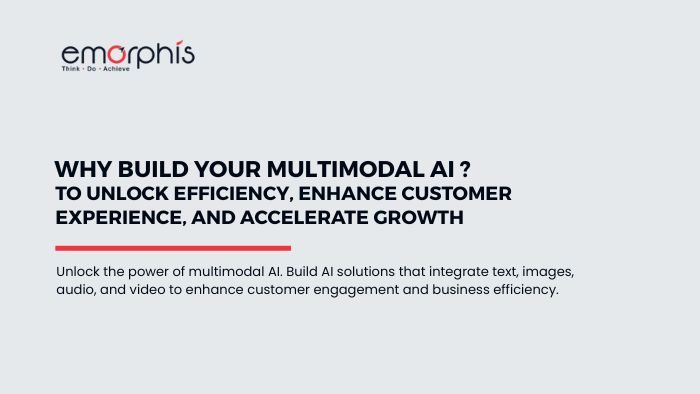Introduction
AI in software engineering is no longer about research papers or demos. It’s now a practical force that’s shaping how we build, ship, and maintain code. From automating boilerplate to refactoring legacy systems, AI is becoming every developer’s second brain, always on, never tired.
Last year, when GitHub Copilot went mainstream and GPT-4 passed the bar exam, a new wave of uncertainty rolled across engineering Slack channels and developer subreddits.
“Will AI take over our jobs?”
“Are we training our own replacements?”
“Is coding even a viable career in five years?”
If you’ve recently tested out OpenAI’s Codex or paired with an LLM to fix a nasty bug, you know things are changing fast. As someone who spent last week diving into the latest tooling, I was both impressed and slightly unnerved.
But here’s the truth: this isn’t a story of replacement. It’s a story of augmentation.
The real challenge? Figuring out how to stay relevant, productive, and ahead of the curve in a world where AI can do in seconds what once took hours.
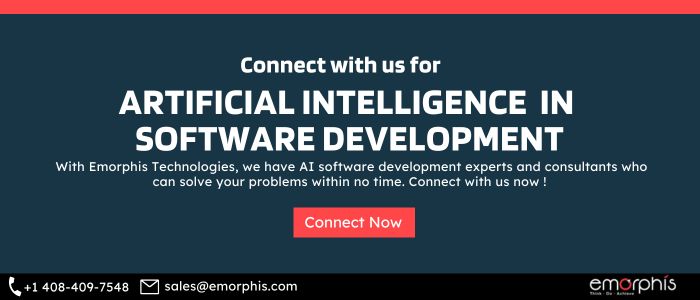
So let’s break this down, layer by layer. We’ll explore what AI is automating, what it’s not, and how you, as a software or product developer, can not only survive but thrive in this AI-first era.
The Rise of AI in Software Engineering
It’s no longer speculation, AI in software engineering has crossed the chasm. What started as autocomplete suggestions has evolved into intelligent systems capable of writing functions, identifying bugs, generating test cases, and even shipping entire features.
This isn’t just about Copilot writing a for loop. It’s about a paradigm shift across the entire Software Development Life Cycle (SDLC).
Where AI Is Already Making an Impact:
- Code Generation
Tools like GitHub Copilot, Amazon CodeWhisperer, and Tabnine don’t just autocomplete lines; they interpret intent. Developers now write pseudocode or even natural language prompts, and AI fills in working code with proper syntax and API usage. - AI Agents for Autonomous Tasks
New players, such as AutoGPT, SWE-agent, and Devin, are exploring autonomous code development. These agents take in high-level objectives and break them down into tasks, writing and testing code end-to-end with minimal human intervention. - AI in Code Review and Quality Control
Platforms such as DeepCode, Codacy, and CodeScene use AI to analyze PRs, flag anti-patterns, and detect security vulnerabilities, all before a human even looks at the diff. - Test Automation
Writing exhaustive unit tests used to be a time sink. Now, tools like Diffblue Cover, Testim, and Mabl utilize machine learning to automatically generate and optimize test suites, drastically reducing manual QA efforts. - Refactoring and Documentation
AI tools such as Mutable AI and Codeium can now refactor legacy code for readability, modularity, or performance, plus generate inline documentation that actually makes sense.
These advancements are more than just efficiency boosts; they’re cognitive leverage.
Why This Matters Now:
- The average development team spends 35–50% of its time on repetitive coding tasks.
- AI tools can reduce bug-fixing time by up to 50%.
- Early adopters report 20–40% faster feature velocity with AI-enhanced workflows.
AI in software engineering is becoming an essential part of the developer toolkit, much like Git, Stack Overflow, and CI/CD were in the past.

What Gets Automated – And What Doesn’t
One of the biggest misconceptions about AI in software engineering is the fear that it’s aiming to automate everything. In reality, AI excels at automating repeatable, pattern-driven, and data-rich tasks, but it still struggles with ambiguous, creative, and context-heavy problem-solving that developers handle daily.
Understanding what AI does well (and where it still falters) is key to adapting your workflow, not fearing the tech.
What AI Automates Exceptionally Well:
- Boilerplate Code Generation
Need CRUD APIs? Want to scaffold a React component or Flask endpoint? AI handles it in seconds. - Routine Refactoring
Renaming variables for clarity, breaking up large functions, optimizing loops—AI tools do this tirelessly. - Testing Automation
Unit tests, integration test scaffolds, test data mocks, platforms like Diffblue and Testim generate these with minimal human input. - Data Transformation Tasks
SQL queries, ETL pipelines, and data cleaning scripts, AI recognizes and replicates these patterns quickly. - Linting & Style Enforcement
Tools like ESLint were manual; AI-enhanced linters now enforce and even fix stylistic errors proactively.
What AI Can’t (Yet) Automate:
- Architectural Decision-Making
Should you use a monolith or microservices? Event-driven or RESTful? AI can’t weigh trade-offs unique to your domain. - Business Logic Modeling
Translating real-world requirements into nuanced code decisions still demands human insight. - Security Threat Modeling
AI identifies OWASP issues, but holistic threat modeling and attack surface analysis remain human responsibilities. - Negotiating API Contracts & Data Ownership
AI doesn’t manage cross-team discussions on versioning, SLAs, or privacy constraints. - Creative Problem Solving
Designing a novel algorithm for a proprietary ML model? Building a real-time gaming backend from scratch? AI can’t innovate, yet.
Learn details on What Are the Trending Generative AI Use Cases for A Business.
Will Developer Jobs Disappear or Evolve?
Let’s be clear: AI in software engineering is not going to wipe out developer jobs. But it is reshaping what those jobs look like. Just like DevOps transformed deployment pipelines or cloud shifted infrastructure management, AI is now shifting how software is designed, written, and maintained.
The Evolution, Not the Extinction, of Roles
What’s changing isn’t the need for developers; it’s the skill sets and responsibilities attached to the title. Traditional tasks like writing boilerplate, documentation, and tests are being automated. This frees developers to move up the value chain.
Here’s how the landscape is evolving:
- AI-Assisted Developers
Developers who skillfully leverage tools like Copilot, Mutable AI, and Codeium to amplify their productivity. These devs focus less on syntax and more on orchestration. - Prompt Engineers for Code
Specialists who know how to craft detailed, context-aware prompts to LLMs like GPT-4, Gemini, or Claude to extract precise, predictable code outputs. This is a real skill, not a gimmick. - AI Integrators
Engineers adept at embedding AI models into products, whether through APIs (OpenAI, Anthropic), SDKs, or custom ML stacks like TensorFlow and PyTorch. - Data-Centric Engineers
Those managing the pipelines, feature stores, and infrastructure necessary to train and deploy AI models reliably (think MLflow, Weights & Biases, Vertex AI).
How Workflows Are Changing for Developers:
- Writing less boilerplate, more business logic
- Reviewing AI-generated pull requests, not just human ones
- Integrating AI APIs alongside traditional services
- Optimizing AI prompts and fine-tuning outputs
- Collaborating with AI just as they would with human colleagues
In short, AI is making developers more strategic.
Companies aren’t hiring fewer engineers; they’re hiring engineers who understand how to leverage AI in software engineering to work smarter, faster, and with greater impact.
What Does This Mean for You?
The developers who thrive in the next decade will:
- Embrace AI as a collaborator, not a competitor.
- Focus on higher-level problem solving, system design, and user impact.
- Build expertise in integrating, supervising, and steering AI tools.
Those clinging to purely manual coding tasks will likely find themselves outpaced, not replaced, by their peers who know how to work with AI effectively.
Opportunities in the Age of AI Software Engineering
Rather than shrinking opportunities, AI in software engineering is opening entirely new frontiers for developers and product teams. Businesses across industries are racing to leverage AI, and with that comes a demand for engineers who not only understand software but also understand how to strategically integrate AI into their systems and products.
a. Custom AI Tooling & Applications
Companies want AI-powered applications tailored to their domain: healthcare diagnostic tools, legal research assistants, or AI-driven CRM platforms. Developers with expertise in AI integration—whether through OpenAI APIs, Hugging Face, or custom models—are in high demand.
b. AI-as-a-Service Platforms
Building SaaS platforms with AI baked in (think AI-driven analytics dashboards, document summarization tools, or predictive engines) is a booming area. This requires robust engineering to ensure scalability, reliability, and security.
c. Enterprise AI Automation
Large enterprises are hungry for internal AI tools to automate processes: code audits, security reviews, customer support bots, and intelligent document processing. AI in software engineering is driving efficiencies in ways RPA alone never could.
d. Data Engineering & MLOps
AI runs on data. Managing data pipelines, model retraining schedules, feature stores, and deploying ML workflows at scale are vital functions. Tools like MLflow, Kubeflow, Vertex AI, and SageMaker are becoming essential parts of enterprise AI stacks.
Example Use Cases Already Thriving:
| Industry | AI Opportunity | Tech Stack / Tools Commonly Used | How AI is Integrated |
|---|---|---|---|
| FinTech | Fraud detection, risk modeling, and credit scoring | Python, TensorFlow, Scikit-learn, H2O.ai, Databricks | AI models analyze transaction patterns for anomalies and automate underwriting processes |
| HealthTech | AI diagnostics, patient triage, and medical imaging analysis | PyTorch, Hugging Face Transformers, FastAPI, MONAI, BioBERT | Computer vision for radiology, LLMs for triage chatbots, predictive analytics for care outcomes |
| LegalTech | Contract analysis, legal summarization, and case insights | OpenAI APIs, LangChain, Pinecone, Haystack, AWS Bedrock | LLMs parse and summarize legal documents; RAG frameworks for accuracy |
| Retail | Predictive inventory, dynamic pricing, customer AI | Databricks, Google Vertex AI, Snowflake, Salesforce Einstein | AI forecasts demand, optimizes supply chain, and personalizes CX with behavior models |
| Manufacturing | Predictive maintenance, quality inspection, anomaly detection | Azure AI, TensorFlow, NVIDIA Isaac, Ansys Twin Builder | AI sensors detect machine faults; computer vision inspects quality; digital twins simulate processes |
| EdTech | Personalized learning, AI tutors, grading automation | GPT-4 APIs, Anthropic Claude, LangChain, LlamaIndex | AI tailors course content to individual learning pace; automates assessment feedback |
| SaaS / Productivity | Document summarization, smart search, and co-pilots | OpenAI, Anthropic, Google Gemini, and Zapier AI integrations | Embeds LLM capabilities into apps for writing, analysis, and automation assistance |
These are not just trends; they represent areas where AI in software engineering is already being productized and monetized by companies at scale. Developers fluent in these stacks are future-proofing their careers.

Skills Developers Should Master to Stay Relevant
If you want to thrive in this AI-first era, your toolbox needs more than JavaScript and Docker. To lead, not lag, you need to integrate AI fluency into your engineering skillset.
1. Core Technical Skills for AI-Enhanced Developers:
1.1 AI / ML Frameworks:
- TensorFlow, PyTorch, and Keras for model development
- Hugging Face Transformers for leveraging pre-trained LLMs
- LangChain, Haystack, LlamaIndex for Retrieval-Augmented Generation (RAG) pipelines
1.2 Prompt Engineering:
- Crafting precise prompts for LLMs (GPT-4, Claude, Gemini) to ensure deterministic, accurate, and contextually aligned outputs
- Developing reusable prompt templates for coding, data extraction, and documentation automation
1.3 MLOps & AI Lifecycle Management:
- MLFlow, Kubeflow, Weights & Biases, SageMaker, Vertex AI
- Model versioning, reproducibility, deployment pipelines, and monitoring
1.4 Data Engineering & Feature Stores:
- Building data pipelines with Apache Airflow, Spark, Kafka
- Managing structured data for AI models through Feast, Tecton
1.5 Cloud-Native AI Tooling:
- Integration with Azure AI, AWS AI/ML stack, Google Cloud AI
- Leveraging serverless infrastructure to deploy scalable AI solutions
2. Soft Skills Developers Need to Sharpen:
- Critical Thinking for AI Outputs: Not all LLM outputs are reliable; human judgment remains crucial.
- System Design with AI Components: Knowing when to build, buy, or fine-tune AI systems.
- Collaboration with Non-Technical Teams: Translating AI capabilities into business value.
Why This Matters:
The fastest-growing companies are already embedding AI in software engineering at the heart of their products and platforms. Developers who can confidently navigate this landscape won’t just keep their jobs—they’ll lead the innovation.
How Businesses Are Rethinking Development Strategies
AI isn’t just changing how individuals code, it’s fundamentally shifting how organizations approach software development at a strategic level. Businesses that understand the transformative potential of AI in software engineering are evolving their processes to stay competitive.
Find details on Why Your Business Needs AI Consulting Services Now More Than Ever.
From Traditional SDLC to AI-Enhanced Pipelines
The traditional software development lifecycle (SDLC) is being reimagined to incorporate AI at multiple touchpoints:
| Phase | Traditional Approach | AI-Enhanced Approach |
|---|---|---|
| Requirements | Stakeholder interviews, docs | AI-assisted market analysis, user behavior prediction |
| Design | UML diagrams, manual iterations | AI-driven rapid prototyping (Figma AI, Uizard) |
| Development | Manual coding, code reviews | AI-assisted coding (Copilot, Mutable AI, Tabnine) |
| Testing | Manual/scripted test cases | AI-generated test coverage (Testim, Diffblue) |
| Deployment | CI/CD pipelines | Intelligent deployment pipelines with predictive analytics |
| Maintenance | Manual monitoring, manual patching | AI-driven anomaly detection, predictive alerts |
Businesses integrating AI into these phases are seeing tangible benefits:
- Faster MVP delivery
- Reduced technical debt
- Higher code quality through AI code review
- Predictive maintenance reduces downtime
AI-First Development Teams in Practice:
Forward-thinking organizations are setting up AI-first teams equipped with:
- LLMs (via APIs or in-house fine-tuning)
- Domain-specific datasets
- Cloud-native AI platforms (AWS Bedrock, Azure AI Studio, GCP Vertex AI)
- Retrieval-augmented generation (RAG) stacks for more reliable outputs
These teams don’t just build products; they architect systems where AI continuously improves engineering velocity and product intelligence.
Why Businesses Are Prioritizing AI in Software Engineering:
- Cost Efficiency: Automating routine tasks reduces headcount needs for repetitive work.
- Time-to-Market: AI accelerates design, build, and deployment phases.
- Competitive Edge: AI-powered features differentiate products: personalization, automation, analytics.
- Scalability: AI systems help manage complexity as products grow in users and features.
The organizations rethinking development strategies around AI in software engineering aren’t reacting to trends; they’re future-proofing themselves against disruption.
Further, find more details on the topic with Master AI Product Development in 2025, Build Scalable, Intelligent, and Secure Products.
Conclusion: Embracing the AI-First Future
You can take only one thing away from this discussion. It should be this: AI in software engineering is not the end of the developer era, it’s the beginning of a smarter, more augmented era of engineering.
The developers who will thrive in the years ahead aren’t necessarily the fastest coders or the most fluent in the latest framework. They are the ones who:
- Understand how to harness AI as a productivity multiplier.
- Know when to trust AI outputs and when to apply critical oversight.
- Can integrate AI systems into complex products with security, ethics, and scalability in mind.
- Embrace AI as part of their daily toolkit, just like IDEs, Git, and CI/CD pipelines.
Just as DevOps shifted the industry from silos to continuous delivery, AI in software engineering is shifting us from manual toil to intelligent collaboration between human and machine.

The future of development isn’t AI replacing humans; it’s AI working alongside humans to tackle bigger problems, faster. Software engineering roles will become more strategic, more focused on outcomes, and more intertwined with AI systems than ever before.
If you’re a developer today, this is your signal:
Learn the tools. Master the workflows. Position yourself not just as a coder, but as a conductor of intelligence.



